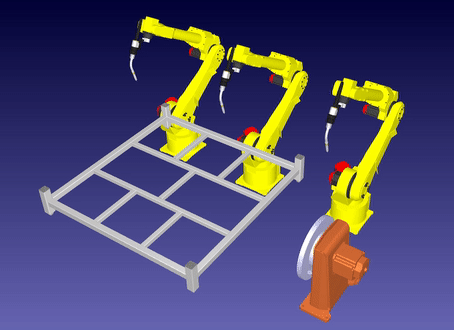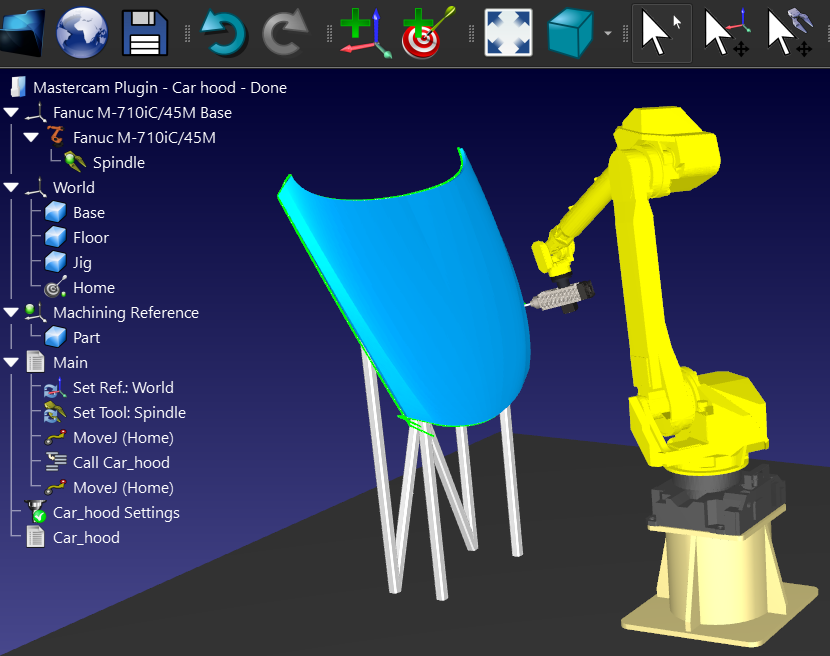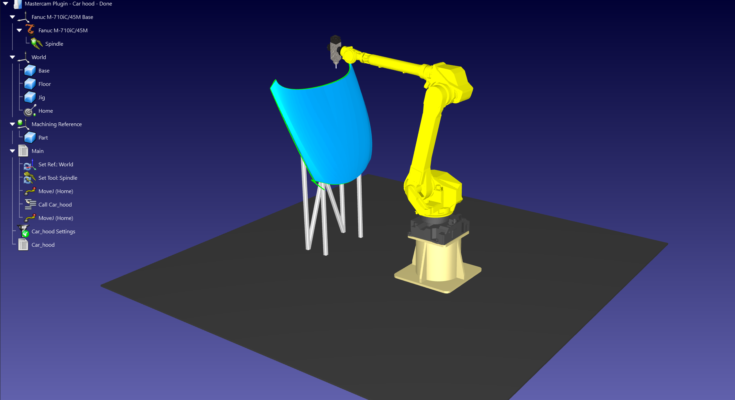Want to get more productivity from your FANUC robot?
And spend less time programming it?
Offline programming could be the perfect way to get more from your FANUC robot. But, it’s not always clear what’s the best way to get started.
Before you can start programming your robot offline, you need to decide which offline programming software you will choose. You also need to be clear on the steps you should take once you have chosen your software.
Here’s a quick guide to getting more from your FANUC with offline programming.
Using the Manufacturer’s Offline Programming Software
If you’re just getting started with offline programming, you might think that you are required to use the offline programming tool offered by the manufacturer. In this case, that would mean FANUC’s Roboguide.
After all, you might think, if the manufacturer provides both the robot and the software, won’t they be the best pairing?
In reality, there are often restrictions caused by using those offline programming software. And the best software for you is not always the one provided by the manufacturer.
Type 1: The Default Option
The offline programming software offered by FANUC is Roboguide. This is a simulator program that is only usable with FANUC robots.
The software’s core functionality allows you to program the robot in a simulated environment. Later, you can download the program to the robot itself.
Users often comment on Roboguide high price. The specific price range of the software varies depending on where you buy it. One new user, for example, explained that the software was “half the price of a new robot!”
For application-specific functionality, you have to pay for add-ons for the software, such as WeldPRO, PalletPRO, and PaintPro.
The cost of the software is recurring as it is based on a subscription model. This is a common situation with manufacturer-supplied offline programming tools.
Type 2: A More Flexible, Accessible Option
What if you want to access the flexibility of offline programming without the restrictions?
There are more options available that you might not have considered yet.

One such option is RoboDK. It is a combined simulator and offline programming software that is brand independent.
It is compatible out-the-box with over 600 robots from 50 brands, including a huge selection of FANUC robots. If you use RoboDK and you ever decide to use a robot from a non-FANUC brand, you aren’t tied into buying yet another software for offline programming and going through even more training.
Compared to Roboguide, the investment for RoboDK is a lot more accessible. Its one-time price is less than half of what many users pay for a one-year license lease with FANUC’s software. And the price listed on our website is the price that you’ll pay. You can also pay for additional years of maintenance at a reduced cost, but only if you want to.
Plus, the wizards in RoboDK that allow it to perform applications such as welding, palletizing, painting, etc, are included in that one-time price.
5 Steps to Use Offline Programming With a FANUC Robot
Getting your FANUC robot started with offline programming couldn’t be easier.
Here are the 5 steps to program a FANUC offline:
1. Select Your FANUC Robot Model in the Robot Library
The first step to getting your robot up and running with offline programming is to load your robot model. With RoboDK, this is simply a case of opening the Robot Library, filtering for FANUC robots, and selecting your specific robot model. This will load it into your simulation space.
It’s highly likely that your model is already listed. However, if it is not available yet, just let us know and we can add it for you.

2. Add Any Extras to the Simulated Cell That You Need
As well as the robot model, you will also need to add the additional extras to your cell that will be needed for your task, e.g. tables, objects, end effectors.
Less is more. Only include virtual objects that are vital for the programming of the robot. It is a waste of your time to include objects just so that the simulation “looks nice.” So, no models of people, safety fences, or other items unless they are absolutely necessary.
3. Program the Robot Using the Graphical Commands
There are various ways to program a robot in RoboDK, including using your favorite programming language. However, the easiest way to get started is with the graphical programming icons.
A good place to learn how to program with RoboDK is via our YouTube channel where we often post step-by-step tutorials.
4. Export the Robot Program
When you have created your robot program, it is a simple task to convert the program into one of FANUC’s robot languages. RoboDK supports both the TP programming language for the FANUC teach pendant and the Karel programming language.
5. Run It on Your Robot
Finally, you just download the program onto the robot’s controller and run it. As you are using offline programming, you will need to use a lot less debugging than with conventional robot programming methods.

Try Out Offline Programming With Your FANUC Today
Still not sure which offline programming tool is the right one for you?
You can try out RoboDK for yourself right now. Just download a copy and you will get a free 30-day trial.
Test it out with your FANUC robot and see if it works for you!
What’s holding you back from trying offline programming? Tell us in the comments below or join the discussion on LinkedIn, Twitter, Facebook, Instagram, or in the RoboDK Forum.




